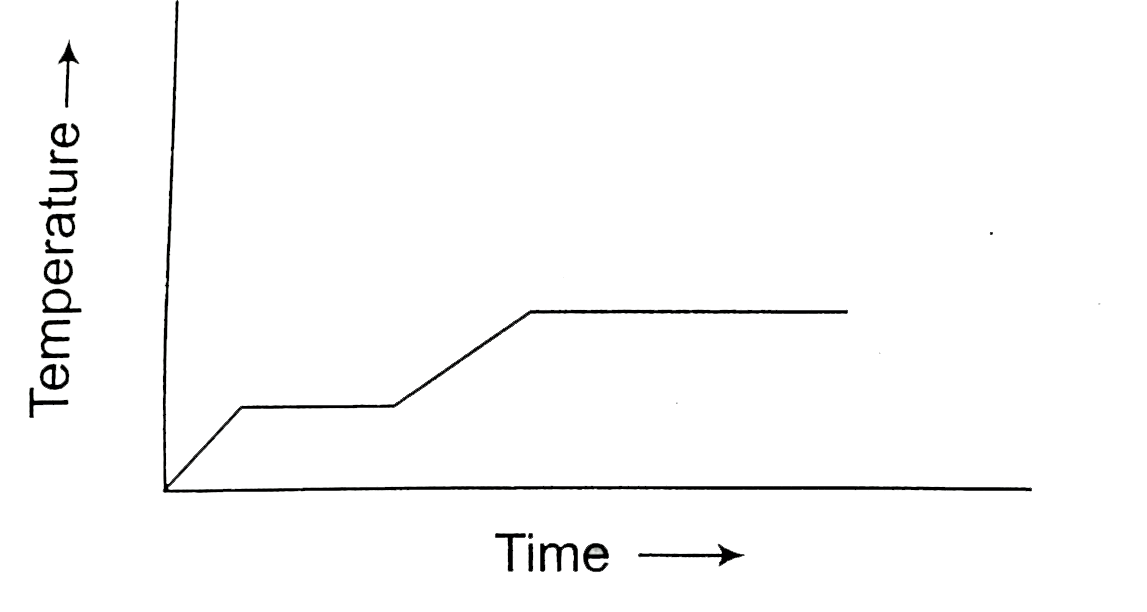
Heat is supplied to a certain homogeneous sample of matter, at a uniform rate. Its temperature is plotted against time, as shown Which of the following conclusions can be drawn?
(i) Its specific heat capacity is greater in the solid state than the liquid state.
(ii) Its specific heat capacity is greater in the liquid state than in the solid state.
(iii) Its latent heat of vaporization is greater than its latent heat of fusion.
(iv) Its latent heat of vaporization is smaller than its latent heat of fusion
A
Its specific heat capacity is equal in the solid state than in the liquid state.
B
Its specific heat capacity is greater in the liquid state than in the solid state.
C
its talent heat vaporization is greater than its latent heat of fusion.
D
its latent heat of vaporization is smaller than its latent heat of fusion.
Video Solution
Text Solution
The correct Answer is:C
Slope of graph is greater in the solid state i.e., temperature is rising faster, hence lower heat capacity
The transition from solid to liquid state takes lesser time, hence latent heat is smaller.
|
Updated on:21/07/2023
Topper's Solved these Questions
Similar Questions
Knowledge Check
- Question 1 - Select One
The specific heat capacity of water is :
A4200 J kg−1K−1B420 J g−1K−1C0.42 J g−1K−1D4.2 J kg−1K−1 - Question 2 - Select One
The S.I. unit of specific heat capacity is :
AJ kg−1BJ K−1CJ kg−1−K−1Dkcal kg−1^∘C−1
Name the liquid which has the highest specific heat capacity.
View SolutionThe specific heat capacity of a body depends on
View SolutionHow is the heat capacity of the body related to its specific heat capacity ?
View SolutionIs the specific heat of water greater than that of sand?
View SolutionDefine heat capacity and state its SI unit.
View SolutionDefine specific heat capacity and molar heat capacity of a substance.
View Solution


